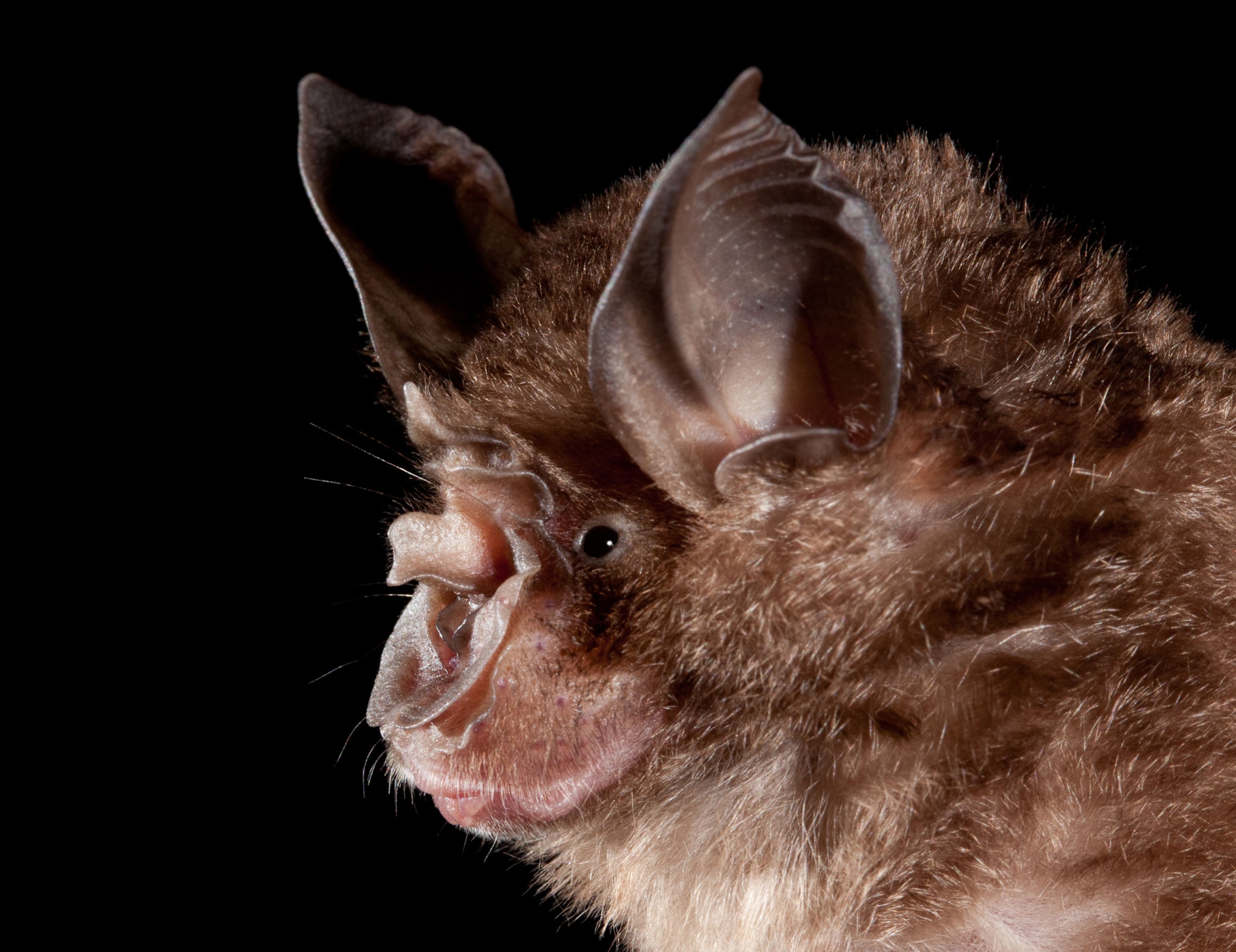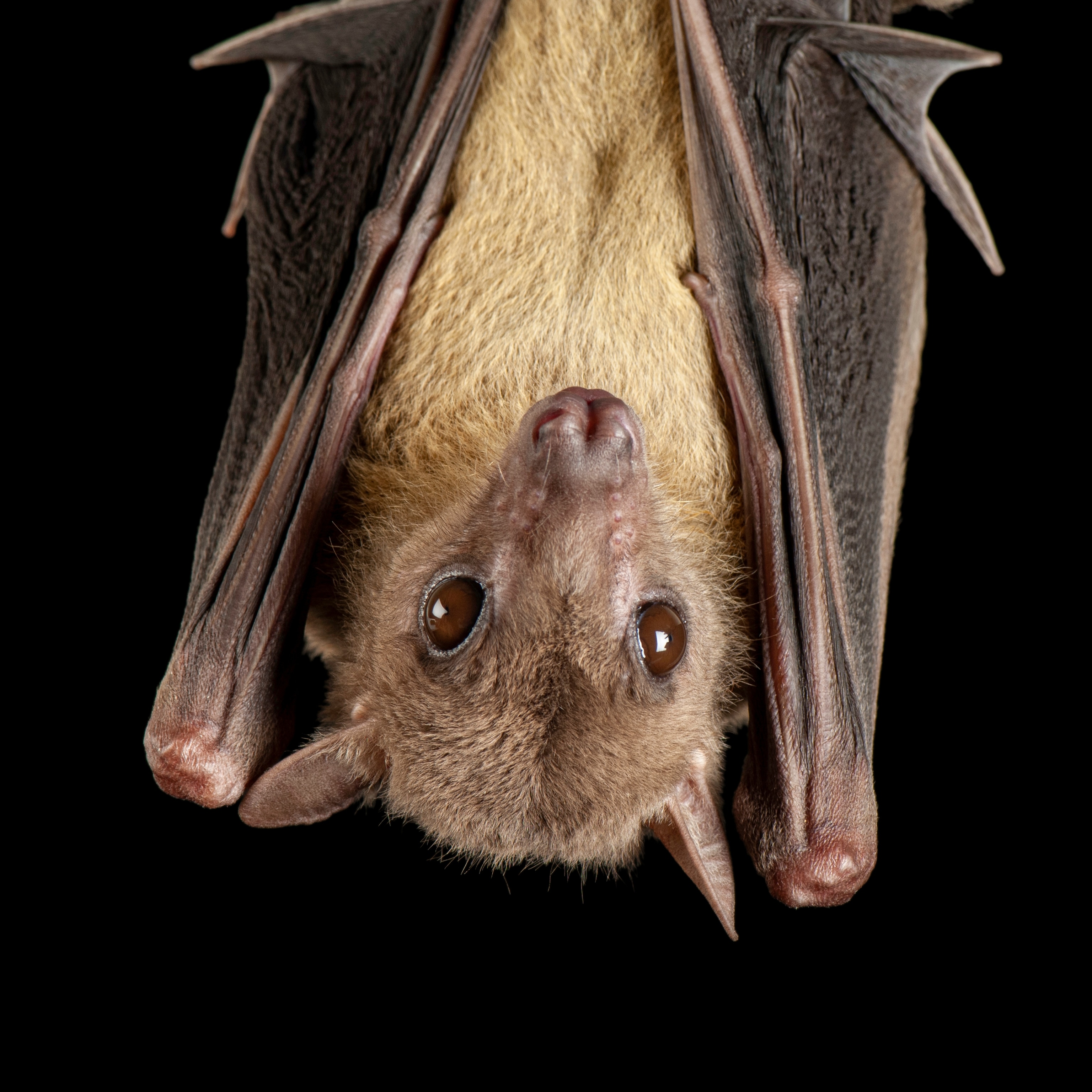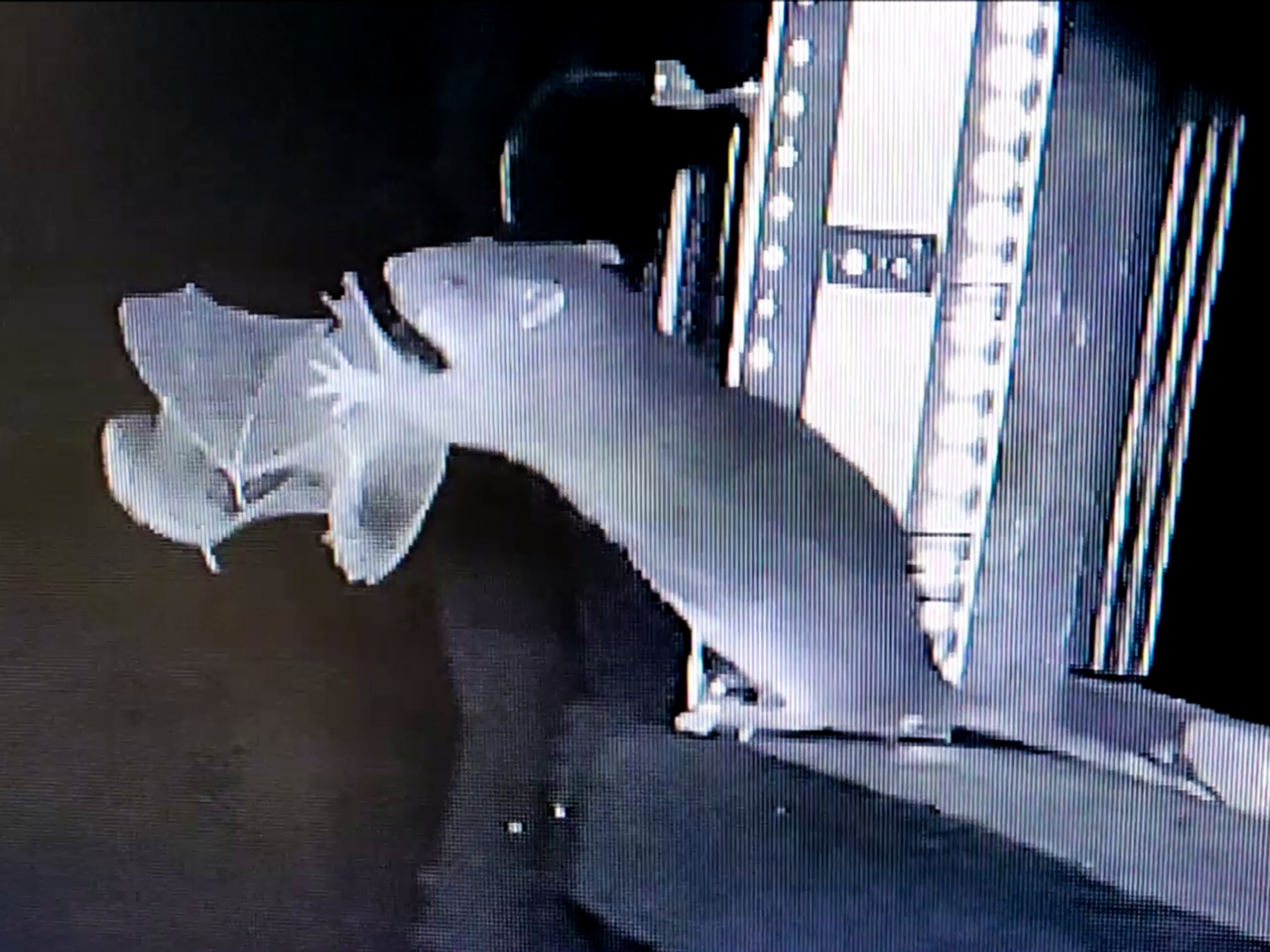
Humans are creating hot spots where bats could transmit zoonotic diseases
A new map shows how human actions are affecting outbreak risks, sometimes in surprising places, which could be a valuable tool in preventing the next pandemic.
As human settlements creep ever closer to wildlife habitat, replacing swaths of forests with development and farmland, scientists fear those land-use changes could spur the evolution of zoonotic diseases such as COVID-19. Areas that have seen dramatic transformations and are home to large bat populations, some scientists believe, could prove to be the starting point of the next coronavirus pandemic.
A group of researchers recently set out to identify where future outbreaks might occur, creating a map of potential hot spots—areas with ingredients potentially favorable to SARS-related coronavirus spillovers. They searched for locations that have a high concentration of Asian horseshoe bats, which host the greatest diversity of coronaviruses, and high levels of both human and livestock settlement and forest fragmentation.
By identifying potential hot spots, the researchers can “help think about how we can reduce the chances of another COVID-19 pandemic,” says David Hayman, a professor of infectious disease ecology at Massey University in New Zealand and study co-author.
Using their hot-spot criteria, the researchers analyzed more than 28.5 million square kilometers of land densely populated by Asian horseshoe bats, which live in tropical and temperate regions and are named for their large, lance-shaped noses. In total, the researchers studied more than 10,000 locations.
They found areas in China to be the hottest spots, and say some areas in other parts of Asia—including Japan, Thailand, and the Philippines—and Europe could turn into hot spots.
Their study was published in May in the scientific journal Nature Foods.
The researchers note that they cannot tie land-use changes directly to the spread of SARS-CoV-2 and the emergence of COVID-19. But they assert that the potential is there, and that greater attention should be paid to how human invasion interrupts bat habitat.
“We know that the more you increase contact between species, the more opportunities there are for infections to jump species,” including from bats to humans, Hayman explains, and adds that the analysis identifies “areas where these conditions are present.”
A potential tool to prevent disease spread
In a previous study, the researchers found that Ebola outbreaks were more likely to occur in areas where forests were fragmented, which led them to use it as a criterion to define likely hot spots for potential coronavirus spread.
It's not forest fragmentation itself that causes disease spread. “It’s what fragmentation means,” says Chelsea Wood, an assistant professor of parasite ecology at the University of Washington who was not involved in the new study. “Where you've got fragmented habitat, you have more contact between humans and the wildlife contained in that fragment.” As forests are carved up, she says, “you create more and more boundaries between human and wildlife—and you provide more and more opportunities for there to be that interaction.”
In the new study, the researchers found the highest number of hot spots in China, which hosts a “concurrence of forest fragmentation, presence of livestock, and human settlements,” says Nikolas Galli, a Ph.D. candidate at Politecnico di Milano in Milan, Italy, and study co-author. The researchers also found that areas in Japan, the Philippines, and Western Europe—including northern Italy, Spain and Portugal—could tip to hot spots with some increased urban expansion, livestock intensification, or forest fragmentation, Galli says.
“As a European, I think we tend to have this bias in considering zoonotic spillover as a risk concerning areas remote from us,” Galli says. He adds that while the results of the study didn’t surprise him, “they surely added nuance to our perspective.”
The researchers are quick to note that the map is based on theory, which “assumes that as you increase livestock density, forest fragmentation, and human density, you increase the risk of zoonotic spillover,” Wood says. It’s not proof that it does, she says.
Colin Carlson, a global change biologist at Georgetown University, concurs. The map is “not saying that land-use change caused COVID-19,” he says, “We can't know that. We still don't know what the reservoir host is. We still don’t know if there was a bridge host.”
Still, the study authors hope the map could be a valuable disease-fighting tool.
Maria Cristina Rulli, a professor of water and food security at Politecnico di Milano and study co-author, says “these results could be useful for governments in creating diseases’ surveillance plans,” providing guidance about where to amplify efforts to prevent and reduce the risk of potential spillovers, and where to build resilience via restoration efforts.
And Hayman adds that areas identified as potential hot spots should “not continue to pursue policies that increase those factors” as a preventative measure.
Bats as disease carriers
No one yet knows for certain how SARS-CoV-2, the virus that causes COVID-19, infected the first human. But one theory widely accepted by scientists is that the novel coronavirus originated in bats and was transmitted to a human, either directly or through an intermediate host, in a phenomenon known as zoonotic spillover.
“Bats are remarkably good at being reservoirs for viruses,” says Wood.
Bats can carry rabies, a dangerous viral disease that can cripple the human nervous system. Some species can safely harbor Nipah virus, which can cause respiratory infection in humans, and Ebola, a disease that has killed thousands of people around the world.
Scientists don’t know why the winged creatures are so apt to carry viruses—or how their own health can thrive “even while carrying these pathogens that are extremely dangerous for other mammals,” Wood says. What they do know is that the viruses carried by bats can spread to other animals, including humans, with often devastating effects: Nipah can be spread when humans drink date-palm sap tainted with bat feces, for example; and scientists believe at least one Ebola outbreak may have started after humans hunted, handled, or ate infected bat meat.
And while “that kind of direct and intimate interaction with bats might sound unusual” to some parts of the world, “it's pretty common in other parts of the world to live close to bats,” says Wood. In some countries, bats are “as common there as squirrels are here.”
Children who play near a tree that hosts a bat roost can carry the revenants of bat droppings to their homes—or directly into their noses or mouths. In some countries, bats are hunted and eaten.
Viruses can also transmit from bats to humans through an intermediary host—another animal that carries the virus from the bat to a person, which is suspected with some Ebola outbreaks.
“The scary thing about these zoonotic viruses is that the spillover process is happening all the time,” says Wood. But the most dangerous and surveilled viruses are those that can be spread from human to human—a process that is “not an easy feat for a virus” that is used to being passed between bats and other mammals, she says. “COVID-19 is a great example.”








